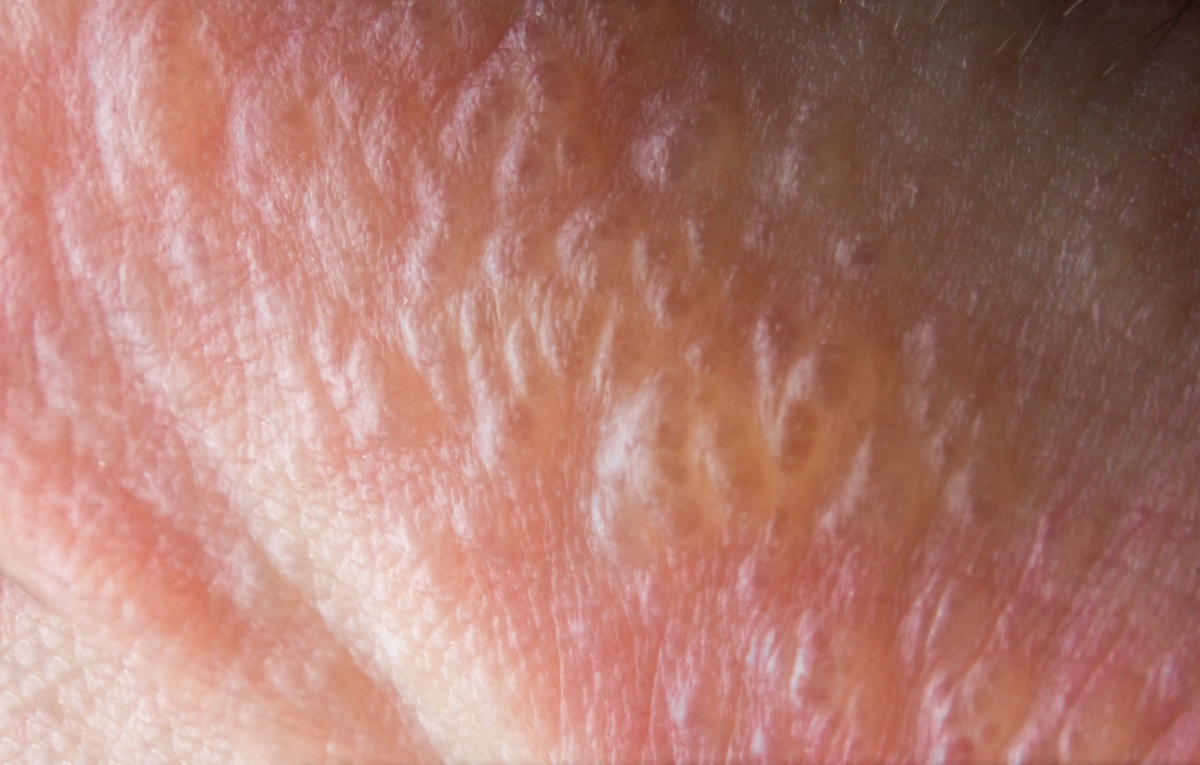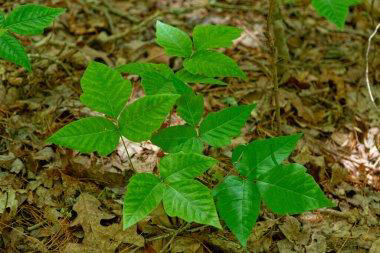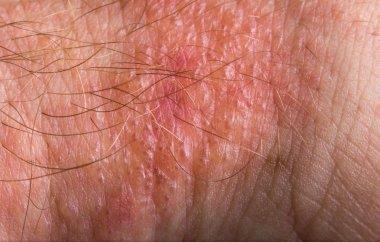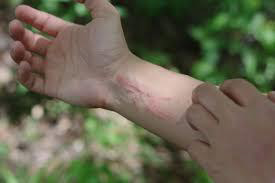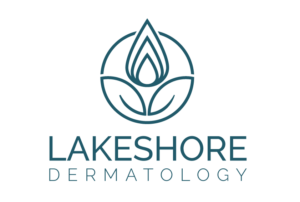Poison ivy is a very common poisonous plant. Touching it can result in an irritating, itchy skin rash. It produces an oil called urushiol that almost everyone is allergic to. When you touch the poisonous plant or an object that’s been in contact with the plant’s oil, you develop an itchy rash on that area of your skin. This rash is a form of allergic contact dermatitis.
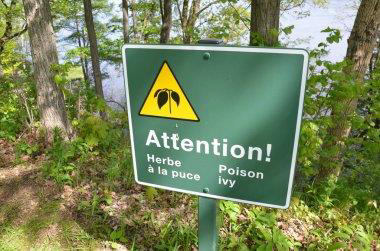
Plant dermatitis is an inflammation of the skin caused by topical contact with a plant or plant constituent. Phytodermatitis is the formal medical name for plant dermatitis, and it may be an irritant contact dermatitis, allergic contact dermatitis, or phytophotodermatitis.
Up to 90% of people who come into contact with poison ivy oil develop an itchy rash. You don’t have to be exposed to much: 50 micrograms (μg) of urushiol — an amount smaller than a grain of salt — is enough to cause a reaction.
Poison ivy can be identified by looking at its leaves. Each leaf of the poison ivy plant has three leaflets. A popular saying is, “leaves of three, let them be.” Poison ivy leaves turn reddish in the spring, green in the summer and yellow, orange or red in the fall.
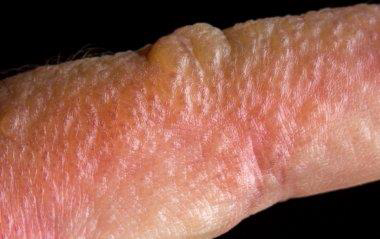
Poison ivy grows as a shrub or a vine. A poison ivy vine is hairy and ropelike. Eastern U.S. poison ivy typically grows as a vine. Western U.S. poison ivy normally grows low to the ground as a shrub. Poison ivy does not have thorns. A poison ivy shrub may have white berries.
Poison ivy can’t be caught from other people. However, oils can stay on clothes, gardening gloves, equipment, tools, shoes, pets, and other items. Touching items with the oils can produce the same skin rash as touching the poison ivy plant directly.
Nearly everyone who touches urushiol gets a poison ivy rash. All parts are poisonous: roots, leaves, flowers, berries, stems, vines. You’re more likely to come into contact with a poisonous plant if you’re a:
- Camper or hiker.
- Farmer or gardener.
- Groundskeeper or landscaper.
- Forestry worker.
- Forest firefighter.
- House painter.
- Roofer.
Poison ivy usually comes in stages and peaks within one to 14 days of exposure. However, symptoms can develop as long as 21 days after initial exposure to urushiol oil for those who’ve never been in contact with it before. Symptoms almost always include:
- An itchy skin rash, Redness and swelling, Blisters.
- Depending on your skin’s sensitivity, a rash may develop within a few hours or a few days after initial contact with urushiol oil.
- The intensity of the itching can vary, and some people may develop one or two small rashes while others develop rashes all over their bodies.
- A poison ivy rash on your skin usually looks like red, itchy bumps. Some people can develop black spots or streaks on their skin instead of the telltale red rash (this is rare). If you have black-spot poison-ivy dermatitis, you’ll have very little or no swelling or redness.
For most people, the stages of poison ivy rash include:
Itching: Your skin will begin itching intensely and the rash will eventually appear there.
Rash: For most people, it’s an intense, blistering rash.
Fluid-filled blisters: If you’ve developed blisters, they’ll break open and leak fluid.
Crusting and itching: The blisters will crust over but will still be itchy.
Some situations increase your risk of problems if you’re exposed to poison ivy. These factors include:
Inhaling smoke: When poisonous plants burn, they release urushiol into the air. You may develop a rash on your face from coming into contact with the smoke or on the lining of your nasal passages, mouth and throat from inhaling the smoke. Oil in the air also affects your lungs and can cause serious breathing problems.
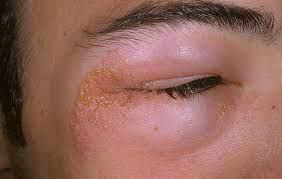
Scratching: It’s hard not to scratch this itchy rash. But you can get an infection if you scratch until your skin bleeds. Bacteria from under your fingernails can get inside any open wound.
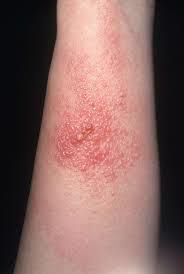
Prevention measures include:
- Apply isopropyl (rubbing) alcohol to exposed body parts, gardening tools or other contaminated items to strip away the oil.
- Scrub under your fingernails with a brush.
- Use dishwashing soap and cool water to wash hands that have touched a poisonous plant.
- Wash clothes after being outdoors.
- Wear long sleeves, pants and gloves when doing yard work, gardening, farming or hiking.
- Wear rubber gloves while bathing pets that have been in contact with poisonous plants.
Home Remedies include:
- Cold compresses: Try applying a cool compress to your itchy skin. Wet a clean washcloth with cold water and wring it out. Then, place the cool cloth onto the area that itches.
- Lukewarm baths: Taking a short, lukewarm bath with colloidal oatmeal can provide some relief from the itching. You can also try adding 1 cup of baking soda to your bath.
You can’t get rid of poison ivy in one day, but for the fastest relief, you should take the following steps:
- Rinse: Rinse your skin with soapy, lukewarm water as soon as possible. If you don’t wash off the urushiol oil, it can spread to other areas of your body and other people.
- Wash your clothing: Wash all of your clothes immediately. Urushiol oil can stick to clothing, and if you touch it again, it can cause another rash.
- Wash everything else: Wash anything that may have come into contact with the oil, including pets, gardening tools, camping gear or golf clubs.
- Avoid scratching: It’s difficult, but try not to scratch. Scratching can lead to an infection.
Don’t touch the blisters: If your rash has blisters, leave them alone. Don’t peel off or try to remove the overlaying skin. This skin protects the wound and prevents infection.
Prevent infection: With any itchy rash, the skin is vulnerable to infection due to abrasions from scratching. Keep skin clean and dry, and notify your healthcare provider if there are signs of infection.
Treatment:
Rashes from poisonous plants usually go away on their own within a week or two. In the meantime, poison ivy treatment includes over-the-counter (OTC) medications that can relieve the itchy rash:
- Anti-itch creams: Poison ivy creams include calamine lotion and hydrocortisone.
For blisters that start weeping or draining, you can use topical astringents made with aluminum acetate - Antihistamines: Antihistamines include medications such as diphenhydramine.
An oral steroid such as prednisone is recommended if it becomes more severe or forms on the mucous membranes of your eyes, nose, mouth or genitals.

